GRETA THUNBERG, EUROPE AND THE REVENGE OF NUCLEAR POWER’S LOBBY
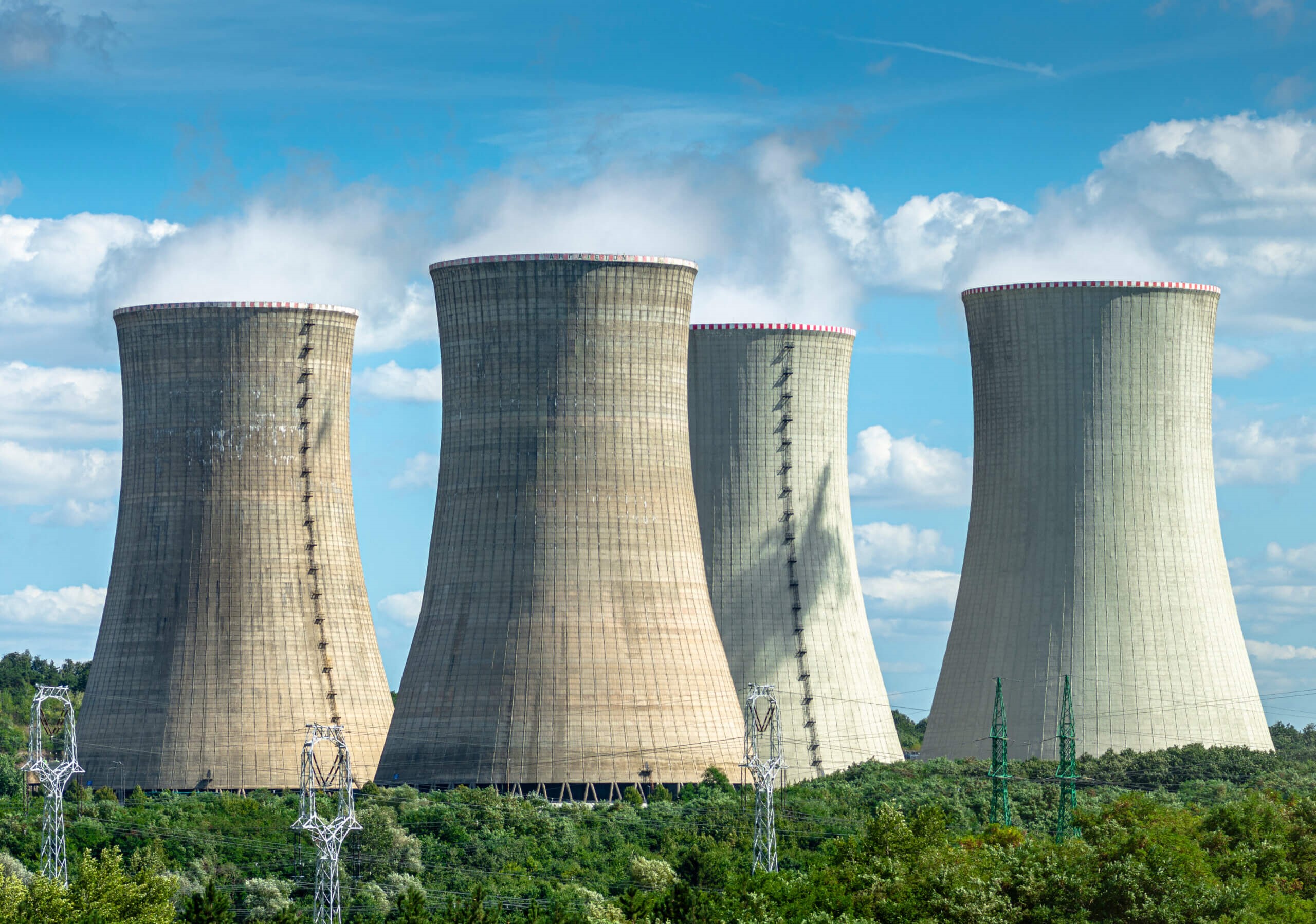
It seemed a closed topic, a heavy legacy from the past, to be closed one step at a time: After the Three Mile Island, Chernobyl and Fukushima disasters, the use of nuclear energy to generate electricity seemed to have been banned forever in countries where for years popular movements had fought to prevent not only the explosion of these plants, causing the poisoning of entire regions and the contamination of entire continents, but to stop the growth of radioactive waste, for which there is no safe system of disposal, being hidden underground, or thrown into the sea, with the risk of causing apocalyptic tragedies.
But here we go again. Under the pressure of the urgent need to reduce the amount of CO2 released into the atmosphere, which is melting the poles, raising the water level, ready to submerge entire nations, and widening deserts and worryingly increasing temperatures, everywhere, even in the part of Europe (especially Italy and Germany) that has for years spoken out against nuclear energy, the power plant lobby is beginning to grow, presenting these plants as the quickest and most efficient solution to the planet’s environmental problems. In some countries, there are even politicians from the historical left and parties that call themselves environmentalists who are ready to re-discuss the issue – and among them is the iconic Greta Thunberg.
Where do we stand
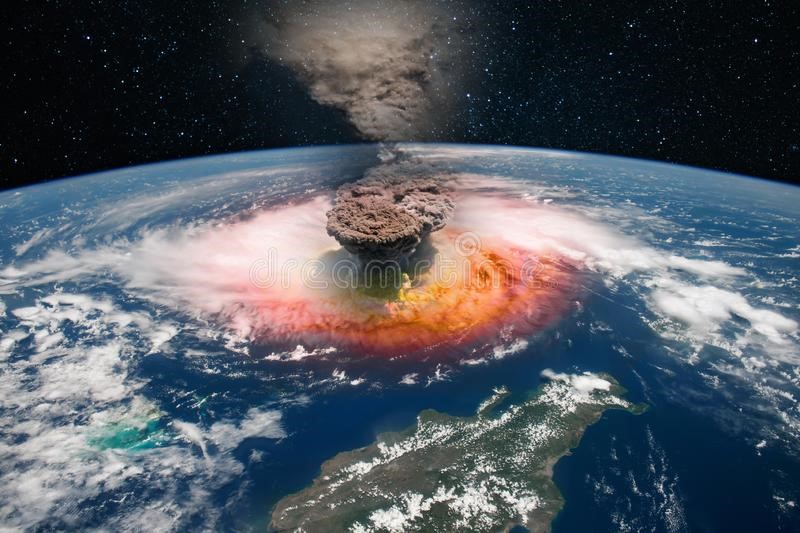
The image of an experimental atomic bomb explosion captured by the cameras of a NASA satellite[1]
The United Nations Conference on Climate Change (31 October – 12 November 2021), COP26, closed in Glasgow a few days ago. Objectives: to zero net emissions globally by 2050 and aim to reduce the increase in temperature to 1.5°C over the same period – and the European Union intends to become the first climate-neutral continent by then[2]. A study by consultancy firms Agora Enegiewende and Ember showed that wind, solar, hydro and biomass production met 38% of the EU’s electricity needs in 2020 (compared to 34.6% in 2019), while the use of fossil fuels fell to 37%[3].
From this point on, in order to replace this 37% with renewable energies, the time available is extremely short, not least because two things are absolutely certain: the need for electricity, fuel for transport and heating will continue to increase, and according to the World Nuclear Association and the United Nations, the amount of electricity used in 2040 will be double that used in 2019, not least because the world’s population will increase from the current 6.7 billion to over 9 billion[4].
The annual report of the IEA International Energy Agency confirms: we will not make it, no matter what is promised by politicians[5]. IRENA (International Renewable Energy Association), on the other hand, argues that two-thirds of the energy needed will be produced from oil or coal[6], and sets out a ‘road map’ for achieving the promised results by 2050. The necessary conditions are:
(a) a political choice common to the whole world, without exception, which understands how the financial investment in renewable energy will not only create an impressive effort, but also great positive results at the industrial level, and decrease the increase (which is already perceived from year to year, from tragedy to tragedy) of natural disasters due to global warming [7];
- b) promoting the use of green energy in industrial transformation processes – since increasing amounts of hydrocarbons and coal, or energy produced from these sources, are used to build renewable energy plants and put them into operation[8];
- c) to increase the use of electricity in transport, and not only by increasing the number of electric cars, but by producing green electricity for railways and by going so far as to produce ships and aeroplanes using electricity – a technological challenge even more than an industrial one, for which a political choice is necessary but not sufficient, if there is not at the same time a joint effort by the United States, the European Union, China and Japan in scientific research and the dissemination of patents[9];
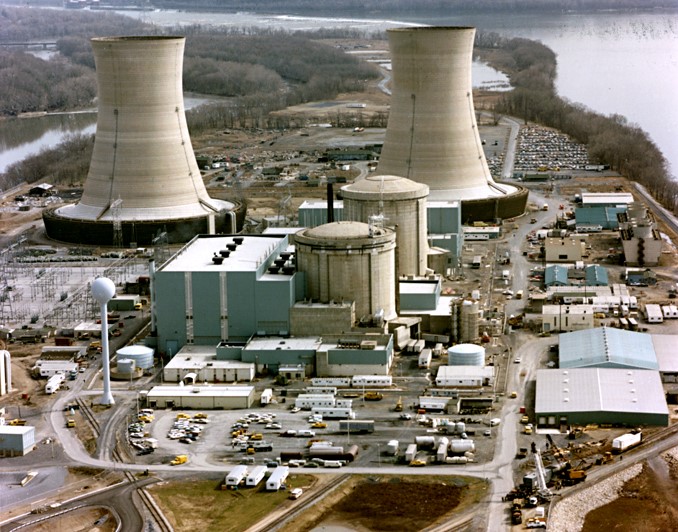
28 March 1979: Reactor 2 of the Three Mile Island nuclear power plant in Pennsylvania explodes while trying to shut it down. No one is killed, but the entire surrounding area is contaminated[10]
- d) a massive deployment of financial resources in support of scientific research and technological innovation that necessarily disregards national self-interest and, while guaranteeing income for those who produce the technology, avoids tariffs and promotes the global dissemination of new discoveries and industrial processes[11];
- e) a global commitment to accompany this effort with a dissemination that allows society to understand and participate consensually in this cyclopean transformation: failure to do so means having on the one hand a selfish West, in which individual consumption is increasing and the renunciation of fossil energy is politically unsustainable, if not with a dictatorship – and on the other hand populations of millions and millions of people fleeing from territories devastated by the increase in temperature, the destruction of water and food sources, the devastation caused by the rise in the water level of the seas[12];
- f) the costs and benefits of the energy transition must be distributed fairly, without penalising developing countries but, on the contrary, by ensuring that this transformation finally brings them closer to the rich countries, saves their agriculture, increases their energy production and therefore their industrial production, and improves, to the point of bringing it up to the level of Western countries, the provision of welfare infrastructure, starting with health and education[13].
If any one of these conditions were to be lacking, the entire Glasgow programme would fail, according to IRENA, and the world would be confronted in 2037 with a dramatic increase in the amount of CO2 in the atmosphere, an average increase of 2 degrees in the temperature of the planet, and irreparable damage, leading to a series of natural disasters on a scale hitherto unknown[14].
Greta Thunberg and the global blablabla

1 October 2021: Greta Thunberg speaks at a young ecologists’ rally in Milan[15]
The young Swedish woman, a symbol of environmental youth protest, has been forced to take an unequivocal position. On 25 October 2021, Greta Thunberg told journalists who asked her for constructive proposals that the arguments against nuclear power were now reduced to the fact that it was “extremely dangerous and expensive” and “time-consuming” to build new plants[16].
The major powers agree with her, starting with US President Joe Biden, who claims that the 94 nuclear power plants currently operating in America are “essential” to achieve the goals set in Glasgow and admits that the figures provided by the Federal Department of Energy[17] are correct: to replace a nuclear power plant, 3 million solar panels or more than 400 wind turbines are needed[18]. That is why, as early as April 2021, when announcing a federal investment package for the energy transition that will cost $2 trillion, he added that the construction of new nuclear power plants is an integral part of the project[19] .
Since 2007, Russia has been implementing a programme to increase uranium production at rates of up to 9% per year, as well as the construction of new nuclear power plants by the state-owned company Rosatom in Russia, Mongolia, Kazakhstan, Ukraine and Uzbekistan[20]. On 2 November 2021, echoing promises made in Glasgow, the Chinese government announced a $440 billion plan to build 150 new nuclear power plants[21], some of them in Africa or even on the borders of Europe: in Great Britain[22].
It is of fundamental importance to understand what choice the European Union will make, starting from the assumption that Italy renounced nuclear power decades ago and Germany, the richest and most industrialised country, decided 20 years ago to close its power stations by the end of December 2022[23]. This decision has been contested mainly by young people, who have no memory of the catastrophes of Three Mile Island, Chernobyl and Fukushima, and no perception of the long-term damage the planet is still suffering from[24].
Greta Thunberg and her supporters believe that all international agreements are just ‘blah-blah’[25]. This is a painful and incontrovertible truth, due to the party interests of individual national movements, the ignorance of the electorate, but also to the complexity of the issue, i.e. the need to find ‘clean’ energy production systems for what is now more than a third of electricity and energy production and which will have to at least double within a decade – leading countries such as China[26] and India to claim that, for them, 2050 is an irreconcilable date[27].
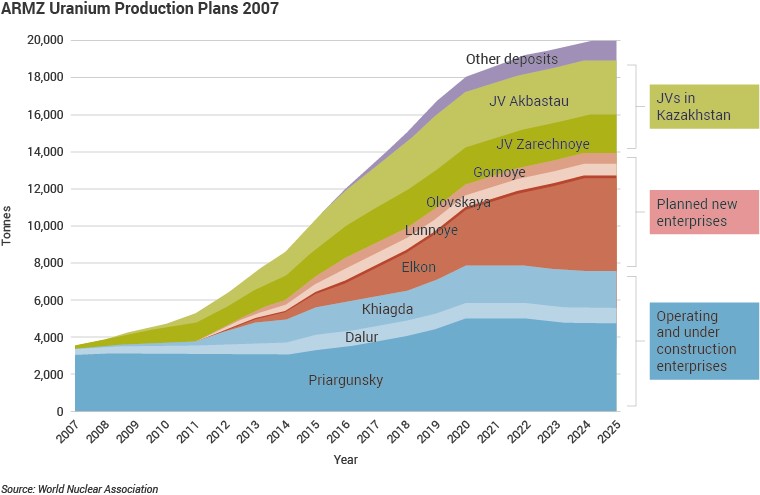
The ambitious nuclear growth plan decided by the Russian Federation in 2007[28]
But it is not just the nation states that need to rethink their policies on nuclear energy: despite its claim to neutrality, the European Commission is said to be prey to the same doubts, as documented in a Greenpeace report[29], which highlights the close relationship between the Joint Research Centre (JRC) – a European Commission research centre, in theory independent – and the atom industry: the inclusion of nuclear power among the activities to be considered green has been one of the Commission’s most debated issues from the outset in its work to define the boundaries of the definition of sustainable economy[30].
Strong economic interests led not only nations for which nuclear power already has considerable weight, such as France, but also some Eastern European nations, to promote strong pressure on European common policy, with the aim of ensuring that this sector was included among the activities considered sustainable[31]. In an initial phase, the TEG (Technical Expert Group) – the group of experts set up by the European Commission to compile a taxonomy of energy sources considered “green”, expressed a negative opinion on nuclear power: not so much because of the pollution caused by the plants during their activity, but because of the management of radioactive waste[32]. After intense pressure from pro-atomic lobbies, the European Commission recently asked the TAG to re-examine the dossier, thus opening the way to the possible inclusion of nuclear power in the list of sustainable activities[33].
Nuclear power today
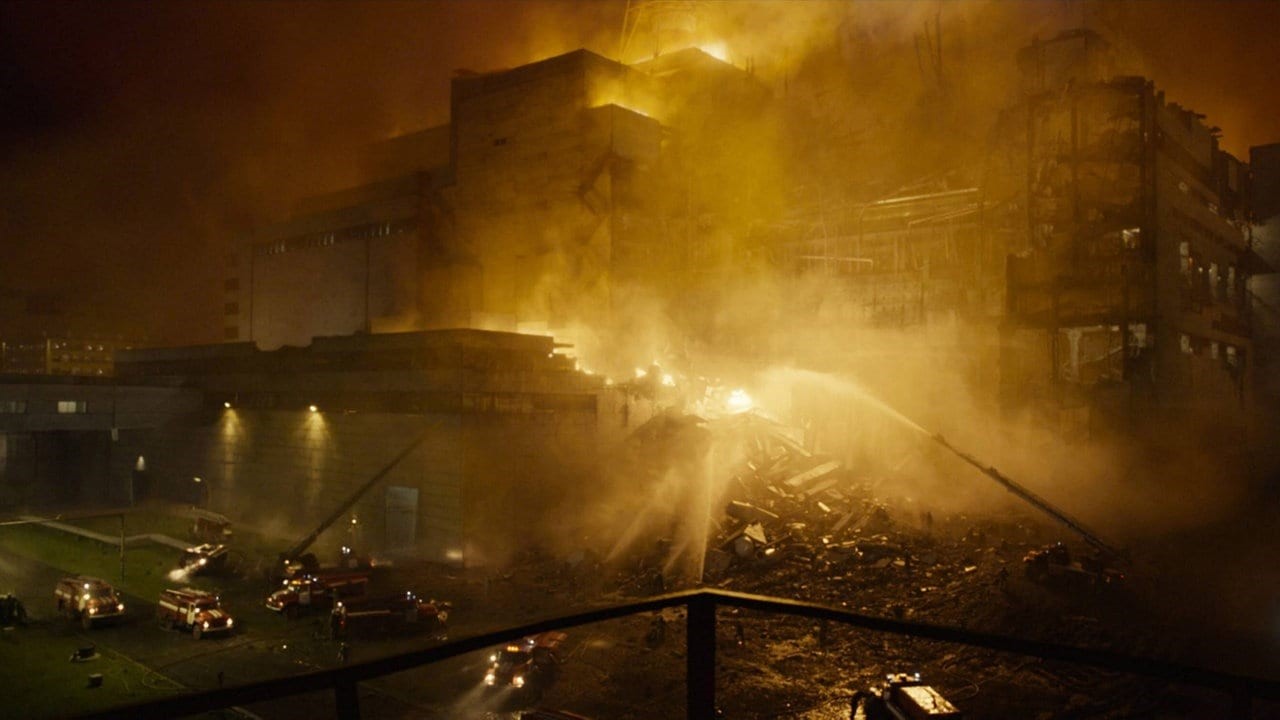
26 April 1986: Reactor 4 of the Chernobyl nuclear power plant in Ukraine explodes – images from a documentary reconstruction by US TV channel HBO aired in 2019[34]
The industrial use of nuclear energy began in the 1950s, first with experiments in the United States[35], and then with the commissioning of the first power plant, the one in Obninsk, 100 km south of Moscow, in 1954[36]. In 1957, the International Atomic Energy Agency (IAEA) was set up in Vienna to oversee the global development of nuclear power[37]. Following the Fukushima disaster in March 2011, the issue is more controversial than ever. In the EU context, however, each Member State is free to choose its own energy mix[38].
There are around 440 nuclear power plants in operation worldwide, spread across 32 countries, more than half of which are over 30 years old: nuclear power accounts for 10% of the energy produced worldwide[39]. The IAEA claims that until 2050 the share of nuclear electricity will continue to grow worldwide: 53 new plants have been built in various countries and 118 are under construction or planned, most of them in China, India and Russia[40].
The reason for this proliferation has so far been unstable oil and coal prices, as well as political problems caused by dependence on producer countries. The increase in the prices of raw materials and, as a cascade, the prices of electricity and natural gas used in homes, is at its highest in the Mediterranean area: in Italy, Spain and Portugal costs are already over 200 euros per megawatt hour (MWh)[41]. Around 90% of the gas used by the European Union comes from Russia, Nigeria and the Perisco Gulf countries, and is used to produce a fifth of its electricity[42].
Prices of this fossil fuel rose by 170% at the beginning of 2021 due to a combination of factors: the resumption of production at full capacity, heat waves that have increased consumption of electricity for air conditioning first, and cold spells that require more heating later[43]. Supplies, meanwhile, have been limited by Russia’s political choice[44], according to a study by Bruegel consultants. This is another reason why the energy transition is crucial: the European Union pays over a trillion euros a year, 5.6% of the continent’s gross domestic product, to satisfy the political blackmail of producer countries[45]. Starting from Italy[46], in several EU countries voices are raised of those who, in order to accelerate the energy transition, are ready to invest in nuclear energy[47], as well as in solar and wind energy. This choice is due to geopolitical reasons[48], even more than to environmental compatibility.
At present, the electricity produced by nuclear power stations generates almost a third of the Union’s electricity and covers a seventh of the energy needed (today)[49]. Brussels is trying to remain neutral: “the Commission’s approach is technologically neutral. The important thing is that safety requirements are met[50]. According to Jacob Werksman, member of the EU Commission’s Directorate-General for Climate Change: “We have to find a way to encourage every investor, from institutions and banks to private consumers, to make the right choice” (…)[51]. The issue of the means of energy production as ‘a crucial node, as part of a broader strategy on sustainable climate finance’. But the real choices, as mentioned, are made by individual national parliaments.
The framework of the European Union countries
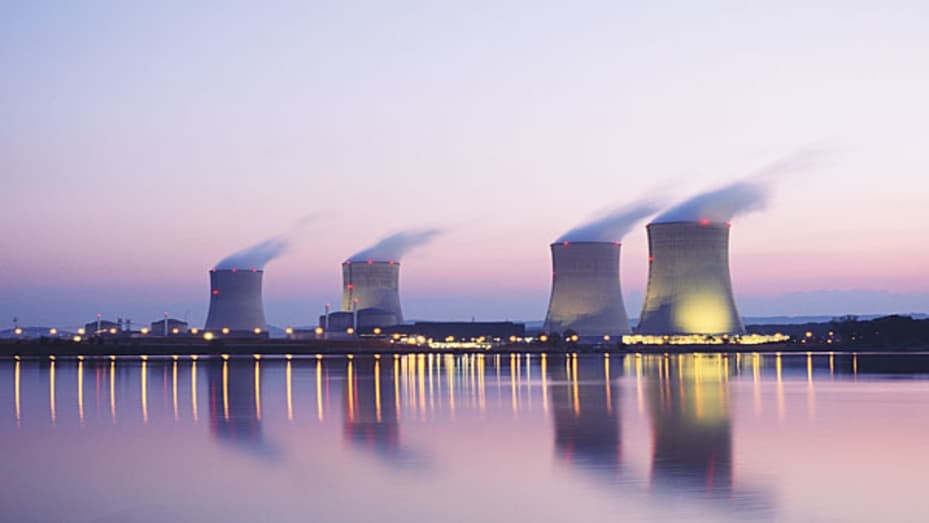
Una visione notturna della centrale nucleare di Cattenom, al confine tra la Francia e la Germania[52]
Within the European Union, France has the highest number of nuclear power plants in the world with 56, Belgium and Spain have seven, Sweden, Germany and the Czech Republic six, Slovakia, Switzerland, Finland and Hungary four, Bulgaria and Romania two, and the Netherlands and Slovenia one each. Portugal, Greece and Ireland do not have any, just like Italy, which definitively abandoned nuclear power projects in the 1990s following the 1987 referendum[53].
France obtains more than two thirds of its electricity from nuclear power[54]: three of its power stations (Gravelines, Paluel and Cattenom) are among the ten largest in the world[55]. President Emmanuel Macron has pledged to reduce the percentage of nuclear power to 50% by 2035, while increasing renewable energy, but the facts contradict these promises, since the President has decided that his oldest reactors, those that will be 40 years old by 2030, can continue to produce energy for another 10 years, reaching 50 years of operation[56].
Germany, on the other hand, has taken the opposite route. After the Fukushima catastrophe in March 2011, Berlin backed down on nuclear power: the aim is to definitively abandon atomic energy by 2022: the farewell will cost Germany EUR 2.4 billion, which will be used to put an end to all the legal disputes that have arisen following the announcement of the “phase out”[57]. During the autumn 2021 election campaign for the federal parliament, ecology was the most debated topic: with the exception of the extreme right-wing party (AfD) and, more discreetly, the Bavarian CSU[58], all the others confirmed their political choice against nuclear energy, and emphasised (especially the Christian Democrats and the Greens) that, in order to speed up the end of the use of gas, oil and coal, the most important step is to switch the entire German housing system to geothermal energy[59].
Belgium too intends to close its nuclear power stations: last year a request by the owners, the French-owned company Electrabel, to extend the life of some of them by another 20 years was rejected by the government[60], and meanwhile Brussels is working on a bid to replace the closure of the first nuclear reactor with a group of new gas-fired plants[61], thus going in the opposite direction to that decided in Glasgow. For this reason the Greens, who are in government with the Liberals, authors of the government’s energy programme, are threatening to leave the coalition and, without saying so publicly, behind the curtain are negotiating with Electrabel for a possible extension of the contract until renewable energy sources have reached the quota set by international agreements[62].
The nuclear lobby is in full ferment, with the aim of saving the seven power stations built after the war, one of which is used for waste disposal and two of which are being dismantled in the last few months[63]. In the Netherlands, however, there is only one nuclear power station in operation at the Borssele site and two plants used for medical and academic research purposes[64]. This is about to change: with the support of almost all parties, including the Greens, the state has voted to build a new plant[65].
Sweden and Finland, on the other hand, continue to focus on nuclear power, which generates 42% of Swedish electricity, and the expansion of this share is a lively part of the debate ahead of next year’s parliamentary elections: the outgoing government has voted to phase out and switch to environmentally friendly energies, but the pro-nuclear front is likely to win the elections and overturn this decision[66]. Iceland, Norway and Denmark, on the other hand, have always rejected this technology, preferring to focus on renewable energies[67]. Denmark no longer has any active plants, and the last to close was the experimental one in Risø[68].
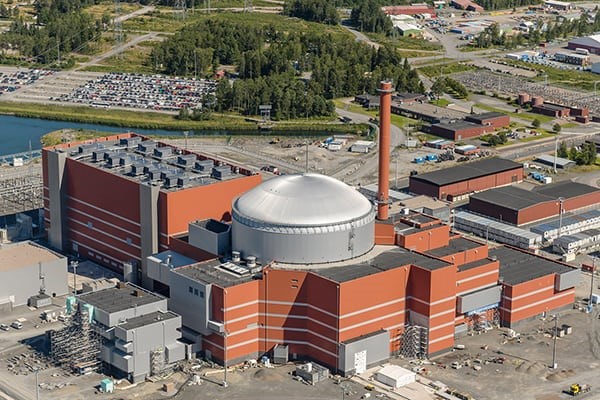
The open building site where the Olkiluoto power plant is due to be completed in 2022[69]
In Finland, what will become Europe’s largest nuclear power station when completed is being built[70]. A proposal to build an additional reactor at Pyhäjoki is also currently under consideration[71]. The Olkiluoto power station, located in the small southern municipality of Eurajoki, was started in 1973[72] and has not yet been completed because of huge problems relating to insufficient safety, environmental damage and disproportionately high production costs[73].
The Finnish Parliament continues to support the project, in the hope that the Olkiluoto site will be completed in 2022, but in the meantime the Greens, who are in government, are beginning to think that, instead of building a huge plant that doesn’t work, it would be better to build smaller and more manageable ones, especially as Finland (like everyone else) has huge problems with the disposal of radioactive waste[74]. A minority position, given the power of the atom industry lobby[75].
In Spain, the socialist government in 2019 had announced that it would shut down the country’s seven nuclear reactors between 2025 and 2035 [76], with the aim of relying completely on renewable energy by mid-century, but the 2021 electricity price hike has reopened the debate on nuclear power, which currently provides one-fifth of the country’s electricity [77]. The Socialists are in government with the left-wing Podemos movement, which calls for an end to nuclear power and coal by 2030[78], but technicians fear that, due to technical problems, the total phase-out will only take place in 2035[79]. Portugal, on the other hand, has no active nuclear power plants – the only one present for research purposes is being dismantled[80].
Austria banned the construction and operation of nuclear power plants by referendum in 1978 and by constitutional law in 1999. The TRIGA Mark II reactor is owned by the Technical University of Vienna and is offline, and the waste is disposed of in the USA[81]. The same applies to Greece, which has only one plant for research purposes[82]. In both countries the issue is considered resolved, and is not currently a topic of political debate.
Finally, Italy has four decommissioned nuclear power plants at the Garigliano, Latina, Trino and Caorso sites: the closure was decided by referendum in 1987[83]. There are four small active research plants at the University of Pavia, the University of Palermo and the Ente Nazionale per l’Energia Atomica in Rome, whose radioactive waste is disposed of in France and the United Kingdom. Nevertheless, Italy is the world’s largest importer of electricity (15% of the total), and this electricity comes from French nuclear power plants[84].
While Western Europe, with the exception of France, is trying to reduce the amount of nuclear power or has banned the construction of plants, the countries of the former Warsaw Pact have made the opposite choice in order to reduce the dependence of their economies on coal[85]. Bulgaria has six reactors, all located at the Kozloduy nuclear power plant, of which only two are in operation. Croatia shares ownership of the Krško nuclear power plant in Slovenia, built in 1981 in what was then Yugoslavia. Slovenia has two plants, one for electricity and one for research[86].
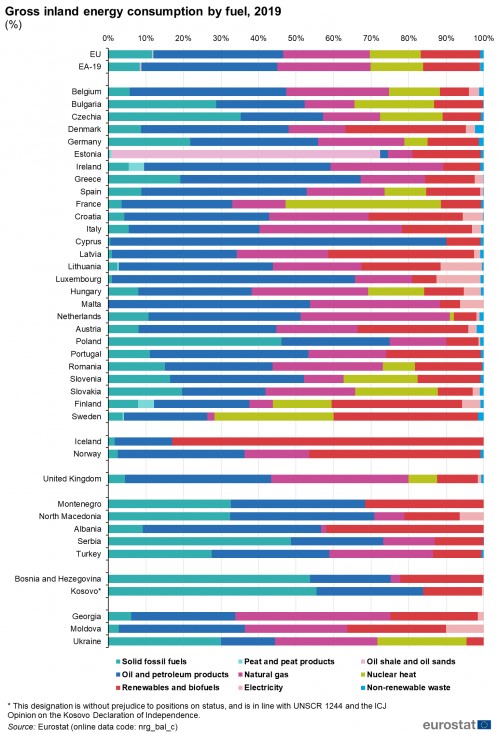
Energy consumption in the European Union divided by energy sources[87]
The Czech Republic has six nuclear plants: two active for research and four for power generation. Hungary has four plants. Slovakia has two nuclear power plants for energy production at the Bohunice and Mochovce sites[88]. The Baltic republics have only two plants, both at the Ignalina plant. Poland will complete its first nuclear power plant in 2024, while Romania has two power plants and two more under construction at the Cernavoda[89] nuclear power plant. In general, all these countries, which came out of the years of Soviet rule with very high CO2 pollution quotas, have for years made the same choice as Russia: better nuclear power plants than coal-fired ones.
The growing need for electricity
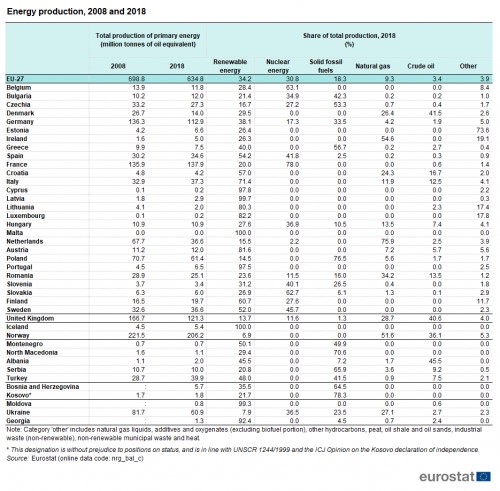
Eurostat graph of energy produced in Europe between 2008 and 2018[90]
As described above, the need for electricity is steadily increasing, although not to the same extent in all countries: the highest growth rates are, of course, in developing countries. In 2019, Germany recorded the highest level of net electricity generation among EU Member States, accounting for 20.8% of the EU total, just ahead of France (19.7%) and Italy (10.2%) [91].
An overall increase of 3.1% in the level of net electricity production in the EU was recorded in the decade 2009-2019, with the largest increases in Sweden (24.2%), Latvia (14.9%) and Ireland (11.4%). At the other end of the scale, 16 EU nations reported a decrease in their level of electricity production in 2019, with the largest reductions in Estonia (-39.6%), Luxembourg (-13.6%) and Portugal (-10.3%) [92].
More than half (56.4%) of the electricity produced in the EU comes from non-fuel sources. A quarter (43.6%) comes from combustible sources (such as gas, coal and oil), a quarter (26.2%) from nuclear power plants. Among renewable energy sources, the highest share comes from wind turbines (13.0%), followed by hydroelectric power plants (12.2%) and solar panels (4.5%)[93] . Between 1990 and 2019, the share of renewable energies grew by 222%, that of fossil fuels decreased by 56%[94].
In terms of gross inland energy consumption, oil held the largest share in 2019 (34.5%), followed by gas (23.1%) and solid fossil fuels (11.6%). In other words, 69.3% of all energy in the Union is produced from highly polluting sources: nuclear heat and renewables account for 13.5% and 15.8% of the total[95]. These figures make it clear that the promises made in Glasgow are really difficult to achieve.
In Italy, the National Recovery and Resilience Plan (PNRR) is part of the European Union’s Next Generation programme: the 750 billion euros package, about half of which consists of grants (312.5 billion) and the rest of low-interest loans (360 billion), was agreed in response to the pandemic crisis[96].

Nuclear sites in Italy – none of which are currently online for energy production[97]
So far, there is no sign in the government’s plans of a change in political strategy on nuclear power – and this would hardly be possible without a new popular referendum to cancel the 1978 one. But for the past ten years there has been a growing cross-party lobby calling for such a rethink: as early as 2010, the then vice-president of the Chamber of Deputies, centre-right MP Maurizio Lupi, who would later become Minister for Infrastructure in the government of Enrico Letta and then Matteo Renzi, published a document, together with the heads of the French nuclear energy company EdF, in favour of Italian nuclear power[98]. A year later, a parliamentary study group, set up on the initiative of the ministry he headed, was disbanded following the vehement popular reaction to the Fukushima disaster[99]. On 4 November 2021, Lupi returned to the attack, and this time he had several industrial and political figures behind him[100].
The temptation seems very strong. Personally, however, I believe it is a chimera against which we must speak out. No matter what the managers of the lobbies and multinationals say, nuclear power stations are extremely dangerous, and there is no solution in the world for the disposal of radioactive waste (there are even those who are thinking of shooting it at the moon[101]), and the United States itself, reasoning on this fact, is considering the possibility of building an automated nuclear power station on the Earth’s satellite, to be used as an outpost while a solution is sought to be able to transport the energy produced on the moon to the Earth[102].
Another important factor is that nuclear energy costs at least twice as much as renewable energy and three times as much as fossil fuel energy, and the time needed for a power plant to be designed, built, tested and brought online is 25 years or more[103] – far too late to have any impact on the industrial transformation needed to meet the Glasgow 2030 targets.
This debate, moreover, unfortunately shifts the focus of the debate: how can electricity production be increased while reducing CO2 emissions? There are two simple and much cheaper answers than the nuclear alternative: the imposition of geothermal heating for homes and offices, as is being promoted in Germany[104]; the reforestation of deserts[105] and the implementation of systems to remove CO2 from the atmosphere: this sounds like a science fiction project, but the technology already exists and is in operation in some experimental locations[106] – the project only lacks a powerful lobby to impose these two solutions. At present, this patent, registered in Switzerland, has only been acquired by ARAMCO, the state oil company of Saudi Arabia[107]. Strange, but true.
But in the race to stop the extermination of life on Earth, military and geopolitical issues are of less than relative importance. As for Greta Thunberg, with all due admiration for this young woman, now is no longer her time, but that of the specialists. Either we all save ourselves, or we all die. At least we know where we stand, and what to expect.
SVE006
[1] https://www.dreamstime.com/photos-images/nuclear-explosion.html
[2] GLASGOW RIGUARDA L’AMBIENTE GLOBALE, MA ANCHE IL POTERE GLOBALE | IBI World Italia
[3] https://cordis.europa.eu/article/id/428997-in-a-first-the-eu-produced-more-energy-from-renewables-than-fossil-fuels-in-2020/it
[4] https://world-nuclear.org/information-library/current-and-future-generation/world-energy-needs-and-nuclear-power.aspx
[5] https://www.iea.org/reports/global-energy-review-2021 ; https://www.iea.org/news/world-energy-outlook-2021-shows-a-new-energy-economy-is-emerging-but-not-yet-quickly-enough-to-reach-net-zero-by-2050
[6] https://www.irena.org/-/media/Files/IRENA/Agency/Publication/2018/Apr/IRENA_Report_GET_2018.pdf , page 3
[7] https://www.irena.org/-/media/Files/IRENA/Agency/Publication/2018/Apr/IRENA_Report_GET_2018.pdf , pages 68-69
[8] https://www.irena.org/-/media/Files/IRENA/Agency/Publication/2018/Apr/IRENA_Report_GET_2018.pdf , page 70
[9] https://www.irena.org/-/media/Files/IRENA/Agency/Publication/2018/Apr/IRENA_Report_GET_2018.pdf , page 70
[10] https://www.nei.org/resources/fact-sheets/lessons-from-1979-accident-at-three-mile-island
[11] https://www.irena.org/-/media/Files/IRENA/Agency/Publication/2018/Apr/IRENA_Report_GET_2018.pdf , page 71
[12] https://www.irena.org/-/media/Files/IRENA/Agency/Publication/2018/Apr/IRENA_Report_GET_2018.pdf , pages 71-72
[13] https://www.irena.org/-/media/Files/IRENA/Agency/Publication/2018/Apr/IRENA_Report_GET_2018.pdf , pages 72-73
[14] https://www.irena.org/-/media/Files/IRENA/Agency/Publication/2018/Apr/IRENA_Report_GET_2018.pdf , pages 21-22
[15] https://www.reuters.com/breakingviews/cox-how-greta-can-transition-blah-blah-blah-2021-10-04/
[16] https://www.reuters.com/breakingviews/cox-how-greta-can-transition-blah-blah-blah-2021-10-04/ ; https://www.latimes.com/opinion/story/2021-10-26/climate-change-nuclear-power-biden-crisis
[17] https://www.voanews.com/a/usa_white-house-cautiously-embraces-nuclear-power-meet-green-goals/6206602.html
[18] https://www.energy.gov/sites/prod/files/2019/01/f58/Ultimate%20Fast%20Facts%20Guide-ebook_1.pdf
[19] https://world-nuclear-news.org/Articles/Nuclear-investments-included-in-Bidens-American-Jo
[20] https://world-nuclear.org/information-library/country-profiles/countries-o-s/russia-nuclear-fuel-cycle.aspx
[21] https://www.bloomberg.com/news/features/2021-11-02/china-climate-goals-hinge-on-440-billion-nuclear-power-plan-to-rival-u-s
[22] https://www.thetimes.co.uk/article/china-threatens-to-pull-plug-on-new-british-nuclear-plants-727zlvbzg
[23] https://www.bmu.de/themen/atomenergie-strahlenschutz/nukleare-sicherheit/aufsicht-ueber-kernkraftwerke/kernkraftwerke-in-deutschland
[24] https://www.welt.de/debatte/kommentare/article234364140/Offener-Brief-Liebes-Deutschland-bitte-lass-die-Kernkraftwerke-am-Netz.html ; https://www.grs.de/5-jahre-fukushima
[25] https://www.youtube.com/watch?v=ZwD1kG4PI0w
[26] https://www.politico.com/news/2021/11/13/coalglasgow-climate-deal-521802 ; https://chinadialogue.net/en/climate/roundtable-should-cop26-be-delayed/
[27] India at COP26: Not Likely to Commit for Net Zero Emissions by 2050; Could Choose the Other Way | The Weather Channel – Articles from The Weather Channel | weather.com
[28] https://world-nuclear.org/information-library/country-profiles/countries-o-s/russia-nuclear-fuel-cycle.aspx
[29] https://www.greenpeace.org/static/planet4-eu-unit-stateless/2021/03/5a375b88-jrc-industrie-nucleaire-briefing-final-29032021.pdf
[30] https://valori.it/nucleare-commissione-greenpeace-jrc-tassonomia/
[31] https://valori.it/nucleare-commissione-greenpeace-jrc-tassonomia/
[32] https://valori.it/nucleare-commissione-greenpeace-jrc-tassonomia/
[33] https://valori.it/nucleare-commissione-greenpeace-jrc-tassonomia/
[34] https://www.mdr.de/nachrichten/welt/osteuropa/ostblogger/hbo-serie-chernobyl-reaktionen-ukraine-100.html
[35] https://web.archive.org/web/20131102212003/http://www.ornl.gov/ornl/news/communications/graphite-reactor
[36] https://www.ceskaenergetika.cz/nezarazene_clanky/obninsk_1954_prvni_jaderna_elektrarna_na_svete.html ; https://inis.iaea.org/Search/search.aspx?orig_q=RN:45041804
[38] www.europarl.europa.eu/-nucleare
[39] https://www.bfe.admin.ch/bfe/it/home/approvvigionamento/energia-nucleare/compiti-dell-ufe/utilizzazione-dellenergia-nucleare-a-livello-mondiale.html
[40] https://www.bfe.admin.ch/bfe/it/home/approvvigionamento/energia-nucleare/compiti-dell-ufe/utilizzazione-dellenergia-nucleare-a-livello-mondiale.html
[41] https://www.linkiesta.it/2021/10/aumento-prezzo-energia-europa/amp/
[42] https://www.linkiesta.it/2021/10/aumento-prezzo-energia-europa/amp/
[43] https://www.linkiesta.it/2021/10/aumento-prezzo-energia-europa/amp/
[44] https://www.linkiesta.it/2021/10/aumento-prezzo-energia-europa/amp/
[45] https://www.rainews.it/dl/rainews/articoli/clima-se-europa-fallira-la-transizione-energetica-andranno-persi-mille-mld-efeac1e4-a6d7-4754-bc42-49b090676bdf.html
[46] https://www.youtube.com/watch?v=xJkjPb0rrg4
[47] Jason Bordoff, “Questa crisi è diversa”, “Internazionale” n.1432/anno 28, 22-28 Ottobre 2021, pp.46-51
[48] Jason Bordoff, “Questa crisi è diversa”, “Internazionale” n.1432/anno 28, 22-28 Ottobre 2021, pp.46-51
[49] https://euractiv.it/section/energia/news/nucleare-chi-spegne-i-reattori-e-chi-vuole-accenderli-le-scelte-degli-altri-paesi-ue/
[50] https://www.lastampa.it/cronaca/2021/11/10/news/l-unione-europea-si-scinde-sull-energia-nucleare-1.40906194/amp/
[51] https://www.lastampa.it/cronaca/2021/11/10/news/l-unione-europea-si-scinde-sull-energia-nucleare-1.40906194/amp/
[52] https://www.cnbc.com/2011/05/20/Worlds-Largest-Nuclear-Power-Plants.html
[53] https://euractiv.it/section/energia/news/nucleare-chi-spegne-i-reattori-e-chi-vuole-accenderli-le-scelte-degli-altri-paesi-ue/
[54] https://euractiv.it/section/energia/news/nucleare-chi-spegne-i-reattori-e-chi-vuole-accenderli-le-scelte-degli-altri-paesi-ue/
[55] https://www.cnbc.com/2011/05/20/Worlds-Largest-Nuclear-Power-Plants.html
[56] https://euractiv.it/section/energia/news/nucleare-chi-spegne-i-reattori-e-chi-vuole-accenderli-le-scelte-degli-altri-paesi-ue/
[57] https://euractiv.it/section/energia/news/nucleare-chi-spegne-i-reattori-e-chi-vuole-accenderli-le-scelte-degli-altri-paesi-ue/
[58] https://www.greenpeace.de/sites/www.greenpeace.de/files/greenpeace_parteien_zur_atomkraft_0.pdf
[59] https://www.kernd.de/kernd/Politik-und-Gesellschaft/Wahlspezials/202109_BTW.php
[60] https://www.dw.com/en/belgium-aims-to-phase-out-nuclear-power-by-2025/a-15500989
[61] https://euractiv.it/section/energia/news/nucleare-chi-spegne-i-reattori-e-chi-vuole-accenderli-le-scelte-degli-altri-paesi-ue/
[62] https://www.politico.eu/article/belgium-nuclear-power-government-climate-greens/
[63] https://world-nuclear-news.org/Articles/Belgian-nuclear-phase-out-an-irreversible-loss-PM
[64] https://mondointernazionale.com/le-centrali-nucleari-nellunione-europea
[65] https://world-nuclear-news.org/Articles/Dutch-study-finds-commercial-support-for-nuclear-n ; https://www.world-nuclear-news.org/Articles/Dutch-NGO-calls-for-government-support-for-new-bui
[66] https://world-nuclear.org/information-library/country-profiles/countries-o-s/sweden.aspx
[67] https://euractiv.it/section/energia/news/nucleare-chi-spegne-i-reattori-e-chi-vuole-accenderli-le-scelte-degli-altri-paesi-ue/
[68] https://mondointernazionale.com/le-centrali-nucleari-nellunione-europea
[69] https://www.powermag.com/startup-of-olkiluoto-3-nuclear-plant-delayed-again/
[70] https://www.youtube.com/watch?v=kYpiK3W-g_0
[71] https://mondointernazionale.com/le-centrali-nucleari-nellunione-europea
[72] https://en.wikipedia.org/wiki/Olkiluoto_Nuclear_Power_Plant
[73] https://www.euractiv.com/section/all/short_news/the-never-ending-saga-of-finlands-olkiluoto-nuclear-plant/
[74] https://www.euractiv.com/section/politics/short_news/finlands-greens-soften-stance-on-nuclear-energy/
[75] https://www.euractiv.com/section/politics/short_news/finland-lobbies-nuclear-energy-as-a-sustainable-source/
[76] https://www.euractiv.com/section/energy/news/spain-to-nix-nuclear-and-coal-power-by-2030/
[77] https://euractiv.it/section/energia/news/nucleare-chi-spegne-i-reattori-e-chi-vuole-accenderli-le-scelte-degli-altri-paesi-ue/
[78] https://www.politico.eu/article/spain-government-coalition-bad-blood-psoe-podemos/
[79] https://www.power-technology.com/comment/spain-nuclear-power-phase-out/
[80] https://mondointernazionale.com/le-centrali-nucleari-nellunione-europea
[81] https://mondointernazionale.com/le-centrali-nucleari-nellunione-europea
[82] https://mondointernazionale.com/le-centrali-nucleari-nellunione-europea
[83] https://mondointernazionale.com/le-centrali-nucleari-nellunione-europea
[84] https://mondointernazionale.com/le-centrali-nucleari-nellunione-europea
[85] https://euractiv.it/section/energia/news/nucleare-chi-spegne-i-reattori-e-chi-vuole-accenderli-le-scelte-degli-altri-paesi-ue/
[86] https://euractiv.it/section/energia/news/nucleare-chi-spegne-i-reattori-e-chi-vuole-accenderli-le-scelte-degli-altri-paesi-ue/
[87] https://ec.europa.eu/eurostat/statistics-explained/index.php?title=Energy_statistics_-_an_overview&action=statexp-seat&lang=it#Consumo_non_energetico
[88] https://euractiv.it/section/energia/news/nucleare-chi-spegne-i-reattori-e-chi-vuole-accenderli-le-scelte-degli-altri-paesi-ue/
[89] https://euractiv.it/section/energia/news/nucleare-chi-spegne-i-reattori-e-chi-vuole-accenderli-le-scelte-degli-altri-paesi-ue/
[90] https://ec.europa.eu/eurostat/statistics-explained/index.php?title=Energy_statistics_-_an_overview&action=statexp-seat&lang=it#Consumo_non_energetico
[91] https://ec.europa.eu/eurostat/statistics-explained/index.php?title=Electricity_production,_consumption_and_market_overview&action=statexp-seat&lang=it#Produzione_di_energia_elettrica
[92] https://ec.europa.eu/eurostat/statistics-explained/index.php?title=Energy_statistics_-_an_overview&action=statexp-seat&lang=it#Consumo_interno_lordo_di_energia
[93] https://ec.europa.eu/eurostat/statistics-explained/index.php?title=Energy_statistics_-_an_overview&action=statexp-seat&lang=it#Consumo_interno_lordo_di_energia
[94] https://ec.europa.eu/eurostat/statistics-explained/index.php?title=Energy_statistics_-_an_overview&action=statexp-seat&lang=it#Consumo_interno_lordo_di_energia
[95] https://ec.europa.eu/eurostat/statistics-explained/index.php?title=Energy_statistics_-_an_overview&action=statexp-seat&lang=it#Consumo_interno_lordo_di_energia
[96] https://www.mef.gov.it/focus/Il-Piano-Nazionale-di-Ripresa-e-Resilienza-PNRR/
[97] https://it.blastingnews.com/ambiente/2018/05/nucleare-in-italia-cosa-farne-002595181.html
[98] Invece di accelerare le rinnovabili, in Italia c’è chi vuole tornare alle centrali nucleari | HuffPost (huffingtonpost.it)
[99] Invece di accelerare le rinnovabili, in Italia c’è chi vuole tornare alle centrali nucleari | HuffPost (huffingtonpost.it)
[100] Energia, Lupi (Nci): rinnovabili non bastano, mozione per nucleare green – La Stampa
[101] https://energycue.it/perche-non-possiamo-lanciare-scorie-nucleari-spazio/13223/ ; https://it.quora.com/Sarebbe-possibile-trasportare-le-scorie-nucleari-nello-spazio-o-sulla-luna
[102] https://www.dday.it/redazione/37616/il-piano-della-nasa-una-centrale-nucleare-sulla-luna-entro-il-2026-per-stabilire-un-avamposto
[103] https://www.wirtschaftsdienst.eu/inhalt/jahr/2011/heft/4/beitrag/kurz-kommentiert-kernkraftwerke-biokraftstoff-japan-unisex-tarife.html ; https://energiewinde.orsted.de/energiepolitik/kostenvergleich-atomenergie-erneuerbare-strompreis ; https://www.bund-sh.de/energie/atomkraft/hintergrund/die-wahren-kosten-von-atomkraft/
[104] Tiefe Geothermie in Deutschland (mags-projekt.de)
[105] TRA SOGNO E SPERANZA: IL PROGETTO DELLA GRANDE MURAGLIA VERDE | IBI World Italia
[106] https://www.mdr.de/wissen/entfernung-kohlenstoff-cozwei-luft-atmosphaere-dac-schon-effizient-moeglich-100.html
[107] https://www.aramco.com/en/sustainability/climate-change/managing-our-footprint/carbon-capture-utilization-and-storage?utm_source=googleads&utm_medium=ppc&utm_campaign=GO_DE_EN_Carbon_Capture_Air_EX&gclid=Cj0KCQiA-eeMBhCpARIsAAZfxZCJj8wr2eweHELHD8fOWJF9KlhgHo5Mq3YX0of5bC81DR6HDV3_am4aAt5dEALw_wcB


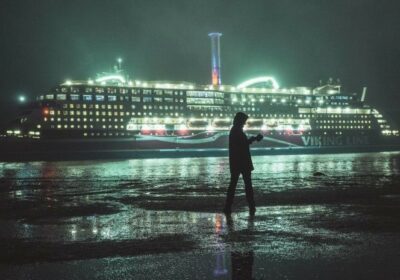

Leave a Reply